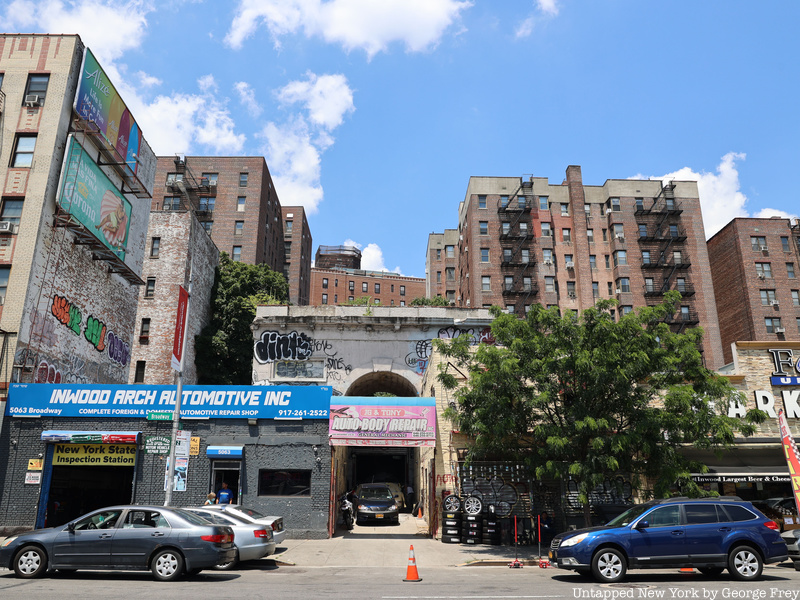6. The Seaman-Drake Arch is a forgotten replica of the Arc de Triomphe

One of the city’s most forgotten monumental arches is the Seaman-Drake Arch, a remnant of a hilltop estate built in 1855 by the once-wealthy Seaman family. In 1851 John Farris Seaman and his brother Valentine — who were the sons of Dr. Valentine Seaman, one of the men who brought Edward Jenner’s smallpox vaccine to the United States — bought 25 acres of hilltop property stretching from what is now West 214th to 218th Streets. At the top of the property, the Seamans built a marble mansion in 1855, with the arch being built from the same material at the beginning of a road that wound up the hill to the house. According to the New York Times, the arch contained a low marble wall said to be an exact replica of the Arc de Triomphe in Paris.
After the marriage of John Ferris Seaman to Ann Drake, the property and arch moved into both family’s possessions, becoming the headquarters of the Suburban Riding and Diving Club in 1895, of which Ann’s nephew Lawrence Drake was a part. A few years later in 1938, the Seaman-Drake estate was sold by its then-current owner Thomas Dwyer for the development of a five-building apartment complex, with the arch being left out of this sale. Since the 1960s, the Seaman-Drake arch has been part of an auto-body shop. Its structure was later severely damaged during a 1970 fire, leaving it roofless and exposed to the elements. Beginning in the early 2000s, efforts were made to provide legal protection to the arch by landmarking it. While this received support from New York City Councilman Robert Jackson, the arch remains un-landmarked and is not listed on the National Register of Historic Places. While the arch remains dilapidated and adorned with graffiti, the Seaman-Drake Arch stands as a paradox of urban history and a sight to behold.





